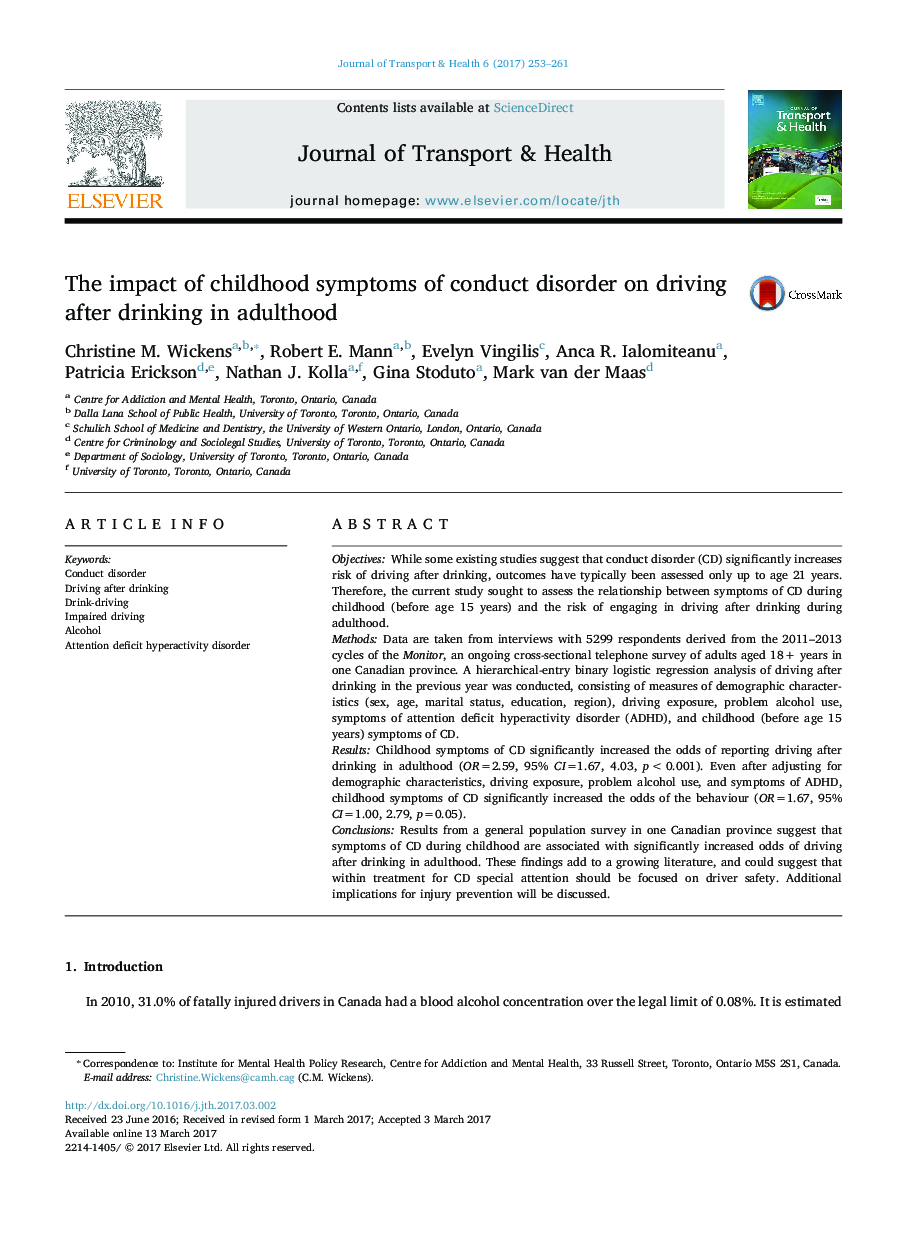| کد مقاله | کد نشریه | سال انتشار | مقاله انگلیسی | نسخه تمام متن |
|---|---|---|---|---|
| 5117661 | 1485455 | 2017 | 9 صفحه PDF | دانلود رایگان |
- Childhood symptoms of conduct disorder are associated with increased odds of drink-driving in adulthood.
- These findings have important implications for drink-driving prevention and rehabilitation.
- Further research is needed to explore mediation of the relationship between conduct disorder and drink-driving.
ObjectivesWhile some existing studies suggest that conduct disorder (CD) significantly increases risk of driving after drinking, outcomes have typically been assessed only up to age 21 years. Therefore, the current study sought to assess the relationship between symptoms of CD during childhood (before age 15 years) and the risk of engaging in driving after drinking during adulthood.MethodsData are taken from interviews with 5299 respondents derived from the 2011-2013 cycles of the Monitor, an ongoing cross-sectional telephone survey of adults aged 18+ years in one Canadian province. A hierarchical-entry binary logistic regression analysis of driving after drinking in the previous year was conducted, consisting of measures of demographic characteristics (sex, age, marital status, education, region), driving exposure, problem alcohol use, symptoms of attention deficit hyperactivity disorder (ADHD), and childhood (before age 15 years) symptoms of CD.ResultsChildhood symptoms of CD significantly increased the odds of reporting driving after drinking in adulthood (OR=2.59, 95% CI=1.67, 4.03, p<0.001). Even after adjusting for demographic characteristics, driving exposure, problem alcohol use, and symptoms of ADHD, childhood symptoms of CD significantly increased the odds of the behaviour (OR=1.67, 95% CI=1.00, 2.79, p=0.05).ConclusionsResults from a general population survey in one Canadian province suggest that symptoms of CD during childhood are associated with significantly increased odds of driving after drinking in adulthood. These findings add to a growing literature, and could suggest that within treatment for CD special attention should be focused on driver safety. Additional implications for injury prevention will be discussed.
Journal: Journal of Transport & Health - Volume 6, September 2017, Pages 253-261
